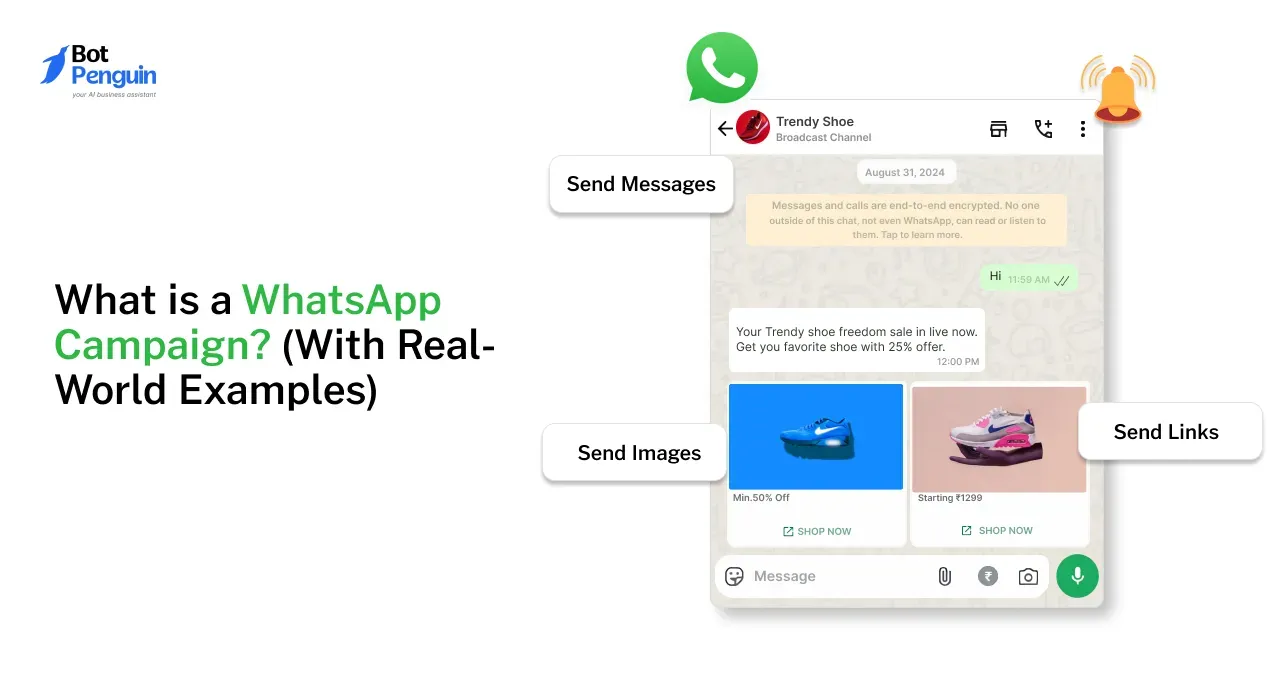Introduction
Voicebot development has become a game-changer for businesses, transforming customer interactions and boosting operational efficiency. According to Grand View Research, the global conversational AI market, including voicebots, is projected to reach $41.39 billion by 2030, growing at a CAGR of 23.6%.
With the number of digital voice assistants expected to surpass the global population by 2024, as per Juniper Research, there’s enormous potential for voicebot technology.
For beginners, voicebot development offers exciting opportunities and challenges. Whether using traditional programming or exploring low-code platforms, understanding the fundamentals is key.
In this article, we will explore essential concepts and alternative approaches in voicebot development for beginners, providing valuable insights into this fast-growing field.
Key Technologies Behind Voicebots
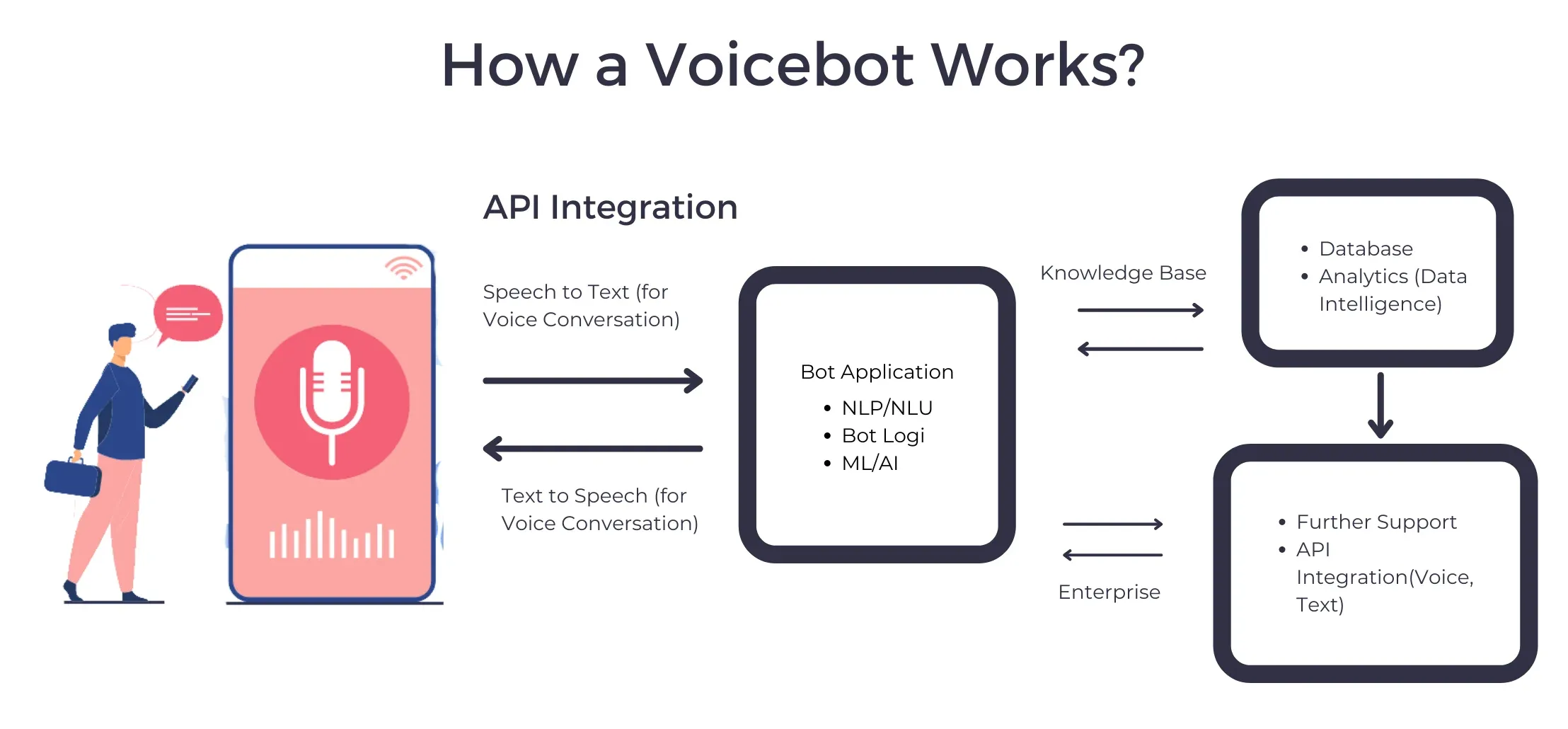
Voicebot development is an exciting field that's transforming how we interact with technology. Understanding the key technologies behind voicebots is crucial for anyone interested in creating them.
1. Natural Language Processing (NLP)
Natural Language Processing (NLP) is a technology that enables machines to understand and interpret human language. It's a critical component of voicebot development, as it allows voicebots to process and respond to spoken words in a way that feels natural to users.
How Does NLP Works?
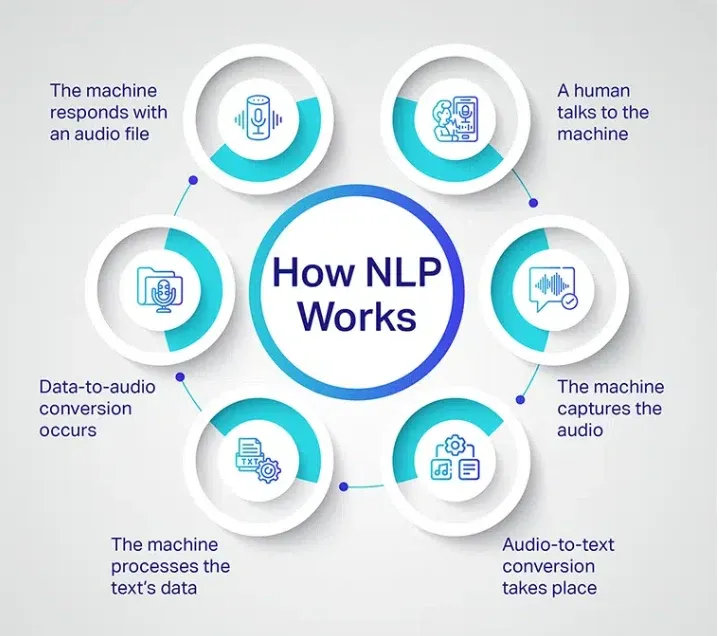
NLP involves several complex processes. It starts with breaking down spoken language into smaller units like words and sentences.
Then, it analyzes the structure and meaning of these units. This analysis includes understanding grammar, context, and intent.
Imagine you're talking to a customer service voicebot about a refund. You say, "I want to return my recent purchase."
The NLP system identifies "return" as the key action and "recent purchase" as the object. It then processes this information to understand that you want a refund for your latest order.
Role of NLP in Voicebots
NLP plays a crucial role in making voicebots intelligent and responsive. Without NLP, voicebots wouldn't be able to understand user commands or provide relevant responses.
NLP helps voice bots interpret user intent, making interactions smooth and efficient.
Consider voicebot development for beginners. Using NLP, a beginner can create a voicebot that understands simple commands like "What's the weather today?" or "Play my favorite song."
The NLP system breaks down these commands, processes them, and delivers accurate responses, enhancing the user experience.
2. Speech Recognition
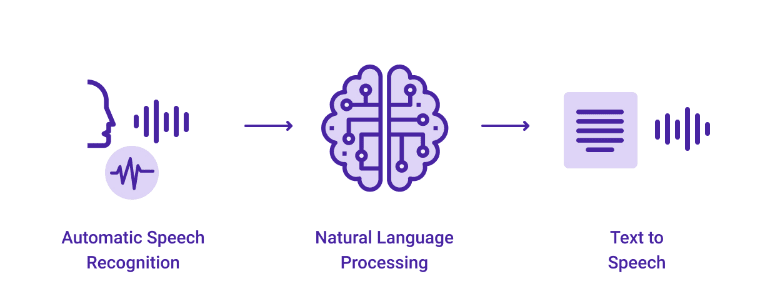
Speech recognition is another key technology in voicebot development. It converts spoken language into text, which the voicebot can then process and respond to.
This technology is vital for enabling voicebots to understand and interact with users.
Suggested Reading:A Beginner's Guide to Voicebot Use Cases
How Speech Recognition Works?
Speech recognition involves capturing spoken words through a microphone and converting them into a digital format. It then uses algorithms to match the sounds to known words and phrases.
This process includes filtering out background noise, identifying different speakers, and understanding various accents and pronunciations.
Imagine you're using a voicebot to book a flight. You say, "Book a flight to New York next Monday." The speech recognition system captures your voice, filters out any background noise, and converts your words into text. The voicebot then processes this text to book your flight.
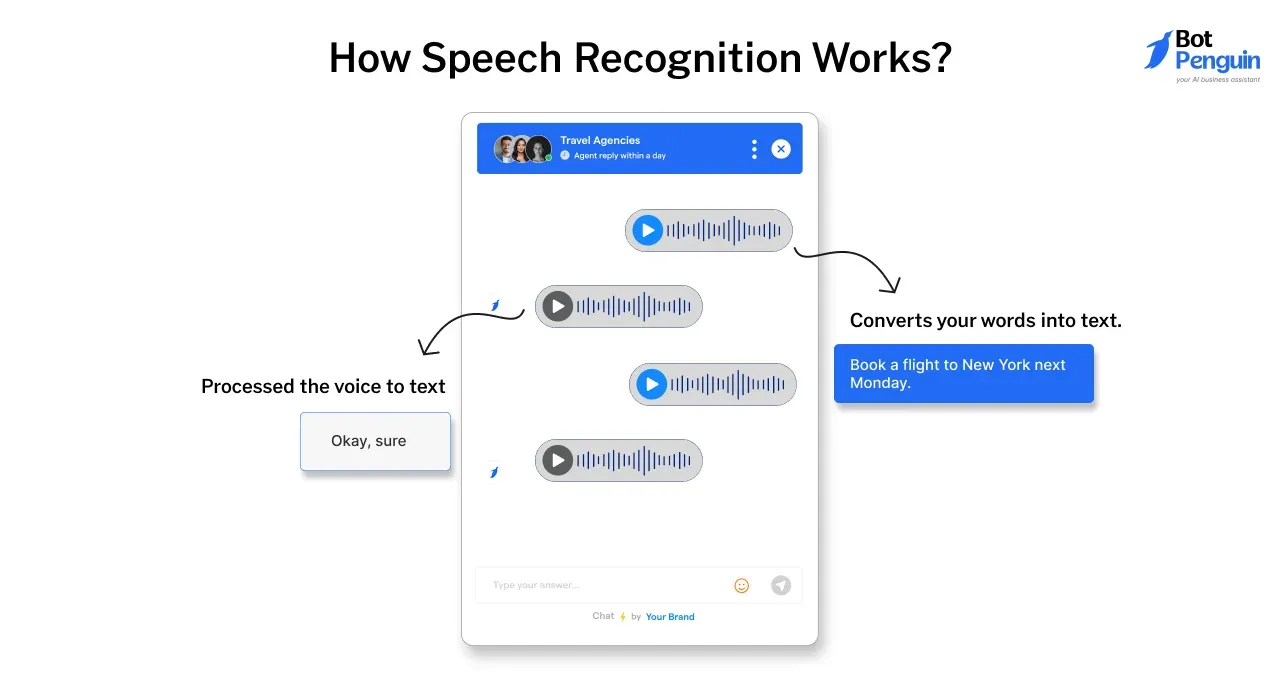
Importance in Voicebot Functionality
Speech recognition is essential for voicebot development because it enables voicebots to interpret spoken commands accurately.
Without reliable speech recognition, interactions with voicebots can frustrate users, as the system may struggle to understand inputs correctly.
In voicebot development for beginners, it's important to recognize that speech recognition can be customized to fit specific needs.
For instance, a voicebot designed for medical consultations can be trained to recognize medical terminology and patient symptoms.
This tailored approach ensures the voicebot provides accurate responses, enhancing user experience and delivering valuable support
Steps to Develop a Voicebot
Developing a voicebot involves several crucial steps, each requiring careful planning and execution. In this section, we'll cover the essential stages of voicebot development, from initial planning to testing and iteration.
Step 1:
Planning and Research
Planning and research are the foundation of successful voicebot development. This phase ensures that your voicebot will serve its intended purpose and meet user expectations.
Step 2:
Identifying Use Cases and Goals
- Use Cases: Identify specific scenarios where your voicebot will be useful. For instance, a customer service voicebot could handle common queries like order status or return policies.
- Goals: Define clear objectives for your voicebot. This could include reducing customer service response times or increasing user engagement on your platform.
Step 3:
Researching Existing Solutions
- Competitor Analysis: Look at existing voicebots in your industry. Analyze their strengths and weaknesses. This helps you understand what works well and what doesn't.
- Technology Review: Evaluate the technologies they use. Determine if these technologies fit your needs or if you need to explore other options.
Step 4:
Designing the Conversation Flow
The conversation flow is the backbone of user interaction with your voicebot. Designing an effective flow ensures that interactions are smooth and intuitive.
- Flowcharts: Use flowchart tools like Lucidchart to map out conversations. Visualizing the flow helps you plan user paths and identify potential issues.
- User Testing: Conduct early tests with real users. Gather feedback on the flow's clarity and efficiency, then refine accordingly.
Step 5:
Choosing the Right Platform
Selecting the right platform is crucial for the success of your voicebot development project. The platform you choose will influence the bot's capabilities, ease of development, and how well it integrates with your existing systems.
In the voicebot development for beginners, understanding each platform's strengths can help make the right decision.
Overview of Popular Voicebot Platforms (e.g., Amazon Lex, Google Dialogflow)
Here is an overview of popular platforms for voicebot development:
- Amazon Lex: Known for its integration with AWS services, Amazon Lex is a good option for building complex and scalable voicebots. It offers advanced features that may appeal to both seasoned developers and those starting out in voicebot development for beginners.
- Google Dialogflow: This platform provides strong NLP capabilities and integrates seamlessly with Google services. It is ideal for creating conversational voicebots that require intelligent interaction, making it a popular choice in the voicebot development space.
- Microsoft Azure Bot Service: An excellent platform for voicebot development for beginners, Azure Bot Service offers easy integration with Microsoft tools and services. Built-in AI features, such as natural language understanding and speech-to-text capabilities, help developers quickly build intelligent, scalable voicebots suitable for various use cases.
Step 6:
Factors to Consider When Choosing a Platform
- Integration Needs: Ensure the platform integrates seamlessly with your existing systems. This might include CRM, databases, or other applications.
- Ease of Use: Consider platforms that offer user-friendly interfaces and extensive documentation. This is especially important for voicebot development for beginners.
- Scalability: Choose a platform that can grow with your needs. If you plan to expand your voicebot's capabilities, make sure the platform can support this growth.
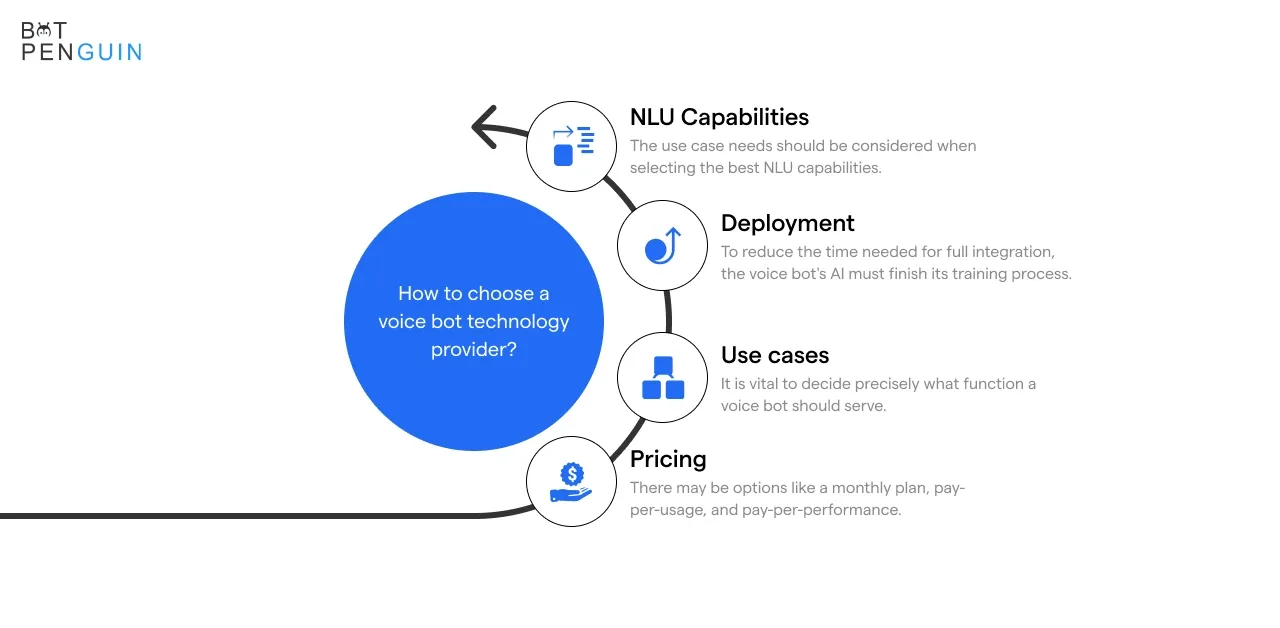
Step 7:
Testing and Iteration
Testing ensures that your voicebot works correctly and meets user expectations. Iteration helps you refine the bot based on feedback.
- Functional Testing: Test all features to ensure they work as intended. Check for any bugs or errors in the voicebot's responses.
- User Testing: Have real users interact with the voicebot. Gather feedback on usability and performance. Identify areas for improvement.
- Simulated Conversations: Use tools to simulate user interactions. This helps identify issues in the conversation flow or voice recognition.
- Live Testing: Deploy the voicebot in a controlled environment. Monitor its performance and gather real-time data on user interactions.
- Feedback Loop: Continuously collect user feedback. Use this information to make iterative improvements to the voicebot.
- Regular Updates: Keep updating the voicebot with new features and enhancements. This ensures it remains relevant and useful to users.
Best Practices in Voicebot Development
Creating an effective voicebot requires more than just technical knowledge. It also demands a focus on best practices to ensure the bot is user-friendly and reliable.
In this section, we will explore some best practices in voicebot development, including user-centered design, handling errors and exceptions, and continuous improvement.
User-Centered Design
Focusing on user experience is crucial for successful voicebot development. A user-centered design ensures that your voicebot meets the needs and preferences of its users.
- Simple Language: Use clear and simple language. Avoid technical jargon. This makes it easier for users to interact with the voicebot. For instance, if a user asks for store hours, a response like "We are open from 9 AM to 9 PM every day" is direct and understandable.
- Intuitive Prompts: Design prompts that guide users smoothly through interactions. If the voicebot is helping book a flight, prompts like "Please tell me your departure city" and "What is your destination?" help users provide necessary information without confusion.
- Personalization: Incorporate personalization to make interactions more engaging. If a user frequently asks about the weather, the voicebot can remember this and start conversations with weather updates, enhancing the user experience.
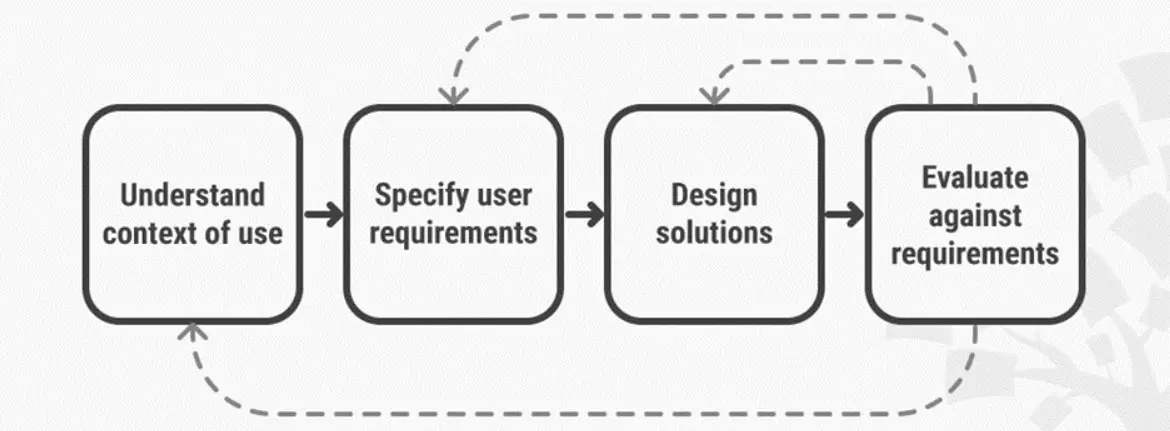
Handling Errors and Exceptions
Even the best voicebots encounter errors. Handling these errors gracefully is essential to maintain user trust and satisfaction.
- Misunderstanding Commands: Voicebots may misinterpret user inputs due to accents or background noise. If a user says "What's the weather like?" and the voicebot responds with unrelated information, this is a common misunderstanding.
- System Failures: Technical glitches can cause the voicebot to stop responding. If a voicebot fails to process a command due to a server issue, users might experience frustration.
- Error Messages: Provide clear and helpful error messages. If a voicebot doesn’t understand a command, it can say, "I'm sorry, I didn't catch that. Could you please repeat?" This helps users know what to do next.
- Fallback Options: Have fallback options to handle unexpected inputs. If the voicebot can't process a request, offering options like "Would you like to speak to a human agent?" ensures users still receive assistance.
- Logging and Monitoring: Implement logging to track errors and their causes. Regular monitoring helps identify and fix recurring issues, improving the voicebot’s reliability.
Suggested Reading:
Continuous Improvement
Continuous improvement is key to keeping your voicebot effective and relevant. Regular updates and user feedback can significantly enhance its performance.
- Usage Analytics: Track how users interact with the voicebot. Identify popular commands and areas where users frequently encounter issues. This data helps refine the voicebot's functionality.
- Performance Metrics: Monitor metrics like response time and error rates. If the voicebot takes too long to respond or frequently misunderstands commands, these are areas to improve.
- Surveys and Feedback Forms: After interactions, ask users for feedback. Simple questions like "Was this helpful?" or "How can we improve?" provide valuable insights.
- Iterative Updates: Use feedback to make regular updates. If users suggest adding a new feature or improving a response pattern, integrate these changes to enhance the user experience.
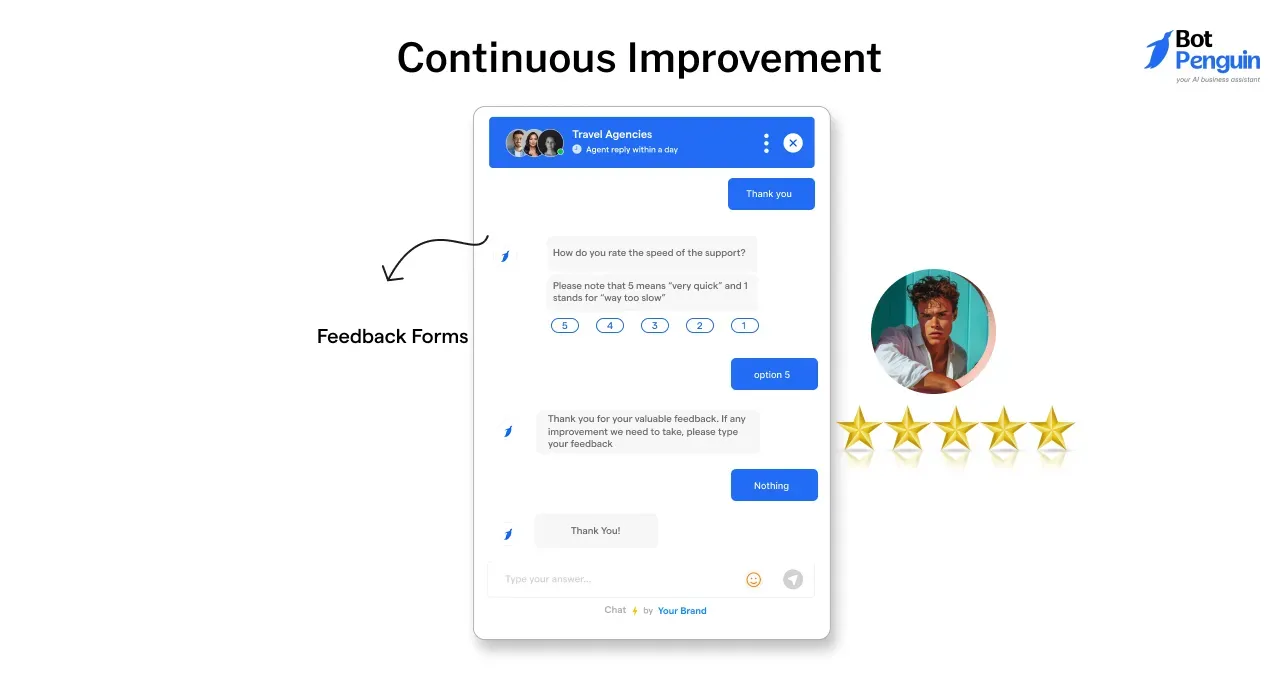
Challenges in Voicebot Development
Voicebot development is an exciting and rapidly evolving field, but it comes with its share of challenges.
Understanding these challenges is crucial for creating effective voicebots. In this section, we will explore the technical hurdles and the obstacles to user adoption that developers often face.
- Accents and Dialects: One major challenge in voicebot development is accurately recognizing diverse accents and dialects. For instance, a voicebot designed for customer service may struggle to understand a user with a heavy regional accent, leading to frustration and poor user experience.
- Context Understanding: Another issue is the voicebot’s ability to understand context. If a user asks, "Can you tell me about today’s weather?" followed by "How about tomorrow?", the voicebot must understand that "tomorrow" refers to the weather. Without this capability, interactions can become disjointed and confusing.
- Advanced Algorithms: Implementing advanced speech recognition algorithms can help overcome the issue of accents and dialects. These algorithms can learn and adapt to different speech patterns over time, improving accuracy. For voicebot development for beginners, using pre-trained models from platforms like Google Dialogflow can be a good starting point.
- Context Management: To handle context better, developers can use techniques like session management. This involves keeping track of the conversation history and using it to interpret user inputs correctly.
For example, if a user asks about the weather, the voicebot can store this context and use it to understand subsequent related questions.
User Adoption
- Ease of Use: Simplifying the interaction process encourages user adoption. A voicebot for a banking app, for instance, should allow users to check their balance or transfer funds with simple, straightforward commands. This reduces the learning curve and increases user satisfaction.
- Education and Training: Providing users with clear instructions and demonstrations can also help. A tutorial showing how to interact with the voicebot can make users feel more comfortable and confident in using it.
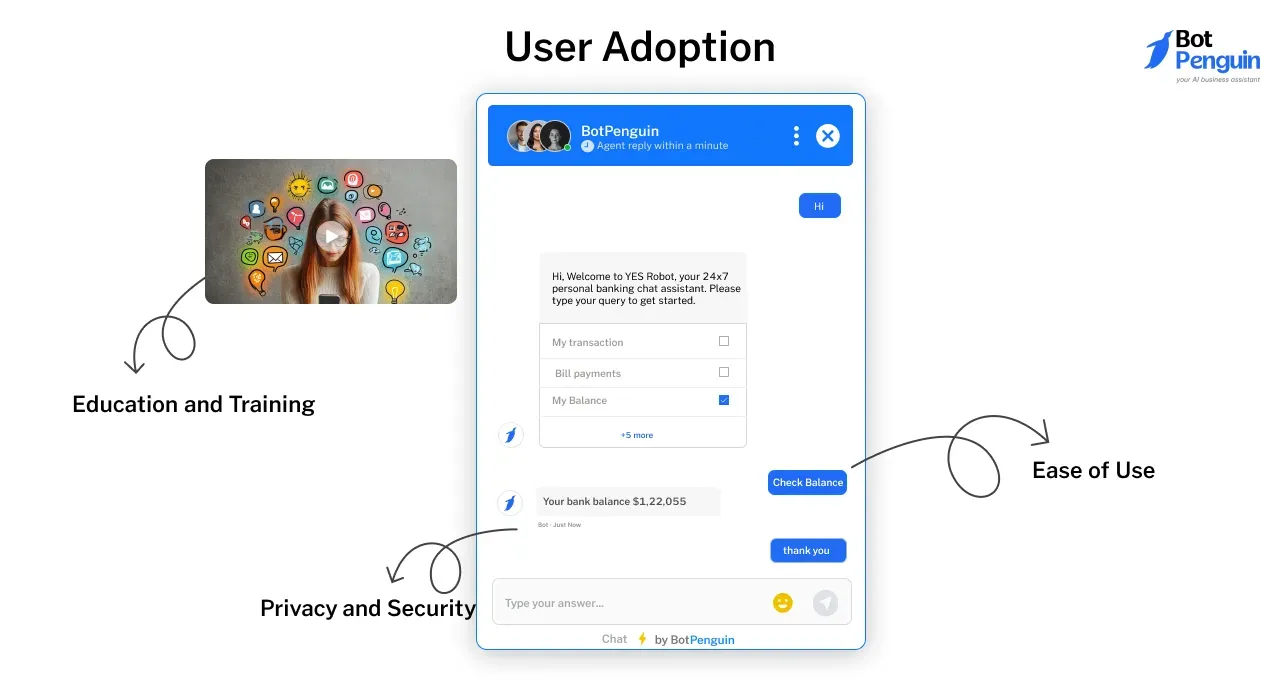
- Privacy and Security: Users often worry about privacy and security when interacting with voicebots. Addressing these concerns is critical. For instance, a healthcare voicebot must reassure users that their medical information is secure and used only for intended purposes.
- Reliability and Accuracy: Users may resist adopting voicebots if they perceive them as unreliable. Ensuring that the voicebot provides accurate and relevant responses can help build trust. If a travel booking voicebot consistently provides correct flight details and booking confirmations, users are likelier to continue using it.
Conclusion
Voicebot development has become a crucial skill in today’s digital world, offering opportunities for both businesses and developers. For beginners, navigating voicebot development may seem challenging, but with the right tools and platforms, it’s accessible and rewarding.
Platforms like BotPenguin simplify the process by offering user-friendly interfaces and pre-built components, making voicebot development for beginners easier to grasp.
As demand for voice-enabled technologies grows, mastering voicebot development will become even more valuable. Advancements in natural language processing and machine learning continue to enhance these platforms, enabling developers to create innovative, efficient voice solutions.
By exploring alternative approaches like BotPenguin, newcomers can quickly gain the skills needed to thrive in this evolving field.
Suggested Reading:
Frequently Asked Questions (FAQs)
What is voicebot development?
Voicebot development involves creating AI-powered bots that understand and respond to spoken language. It uses technologies like Natural Language Processing (NLP) and speech recognition to facilitate human-computer interactions.
How does Natural Language Processing (NLP) work in voicebots?
NLP enables voicebots to understand and interpret human language by breaking down speech into words and sentences, analyzing grammar and context, and processing intent to provide relevant responses.
What platforms are best for voicebot development?
Popular platforms for voicebot development include Amazon Lex and Google Dialogflow. They offer robust NLP capabilities, integration options, and user-friendly interfaces suitable for both beginners and advanced developers.
What are the main challenges in voicebot development?
Key challenges include accurately recognizing diverse accents, managing context, ensuring privacy and security, and encouraging user adoption by addressing concerns and simplifying interactions.
How can I improve user adoption for my voicebot?
Enhance user adoption by making interactions simple, providing clear instructions, addressing privacy concerns, and consistently ensuring the voicebot delivers accurate and reliable responses.
What are the best practices for voicebot development?
Best practices include focusing on user-centered design, handling errors gracefully, continuously monitoring performance, gathering user feedback, and iteratively improving the voicebot to enhance user experience and functionality.

